Relativity of art appreciation is nowadays common knowledge.
The same work will move different people in different manners, at a different intensity. Even the same work can move the same individual in various ways, depending on various factors (mood, education, observation time, etc.)
Yet, despite this intrinsic subjectiveness, there are objective ways to appreciate a work of art.
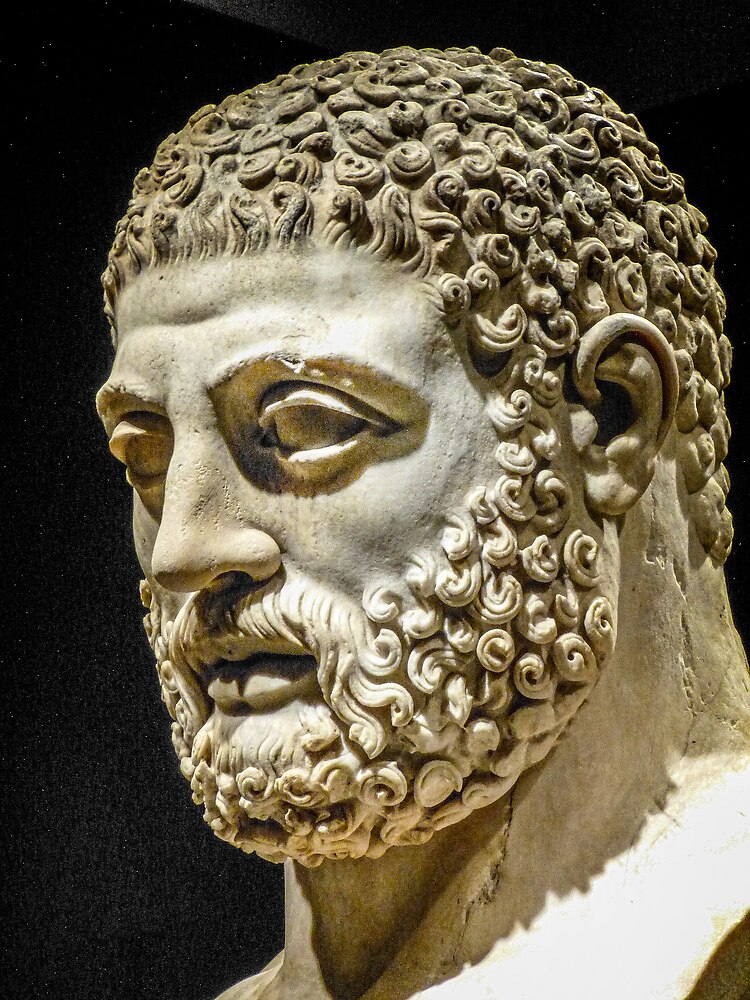
Head from statue of Heracles, Roman 117-188 CE from villa of the emperor Hadrian at Tivoli, Italy
by
Mary Harrsch
I would propose to consider the following 5 layers:
- Artisanal: materials, technical execution correctness, etc.
- Superficial: “syntactical” correctness, draftsmanship, etc.
- Semantical: meaning, message, impact, etc.
- Presentational: frame, light, press, context, etc.
- Financial: pricing, financial investment, etc.
Artisanal layer
The artisanal layer wraps all that is related to the physical properties of the involved materials, such as linen quality, pigments’ permanence, respect of the fat over lean principle in oil painting, and so forth.
Example: Iron oxide (rust), besides being “obviously” resilient, is practically relatively versatile color-wise: it contributes to some reds, ochres, blacks, browns, and, like charcoal or chalk (limestone) has been used since pre-history.
Heracles and Omphale ancient Roman fresco, Pompeian Fourth Style (45-79 AD), National Archaeological Museum of Naples, Italy.
by
Stefano Bolognini
Superficial/syntactical layer
The syntactical layer regroups technical painting/drawing skills, such as anatomical correctness, proportions, light handling, texture, visual composition, etc. That is, how to use the materials to create interesting/accurate visual effects.
Example: The following, by contrast with a realistic écorché, exemplifies a dreadful anatomy, nevertheless rendered through a magnificent cross-hatching (this may not be obvious through the thumbnail; try opening the image and zooming in):
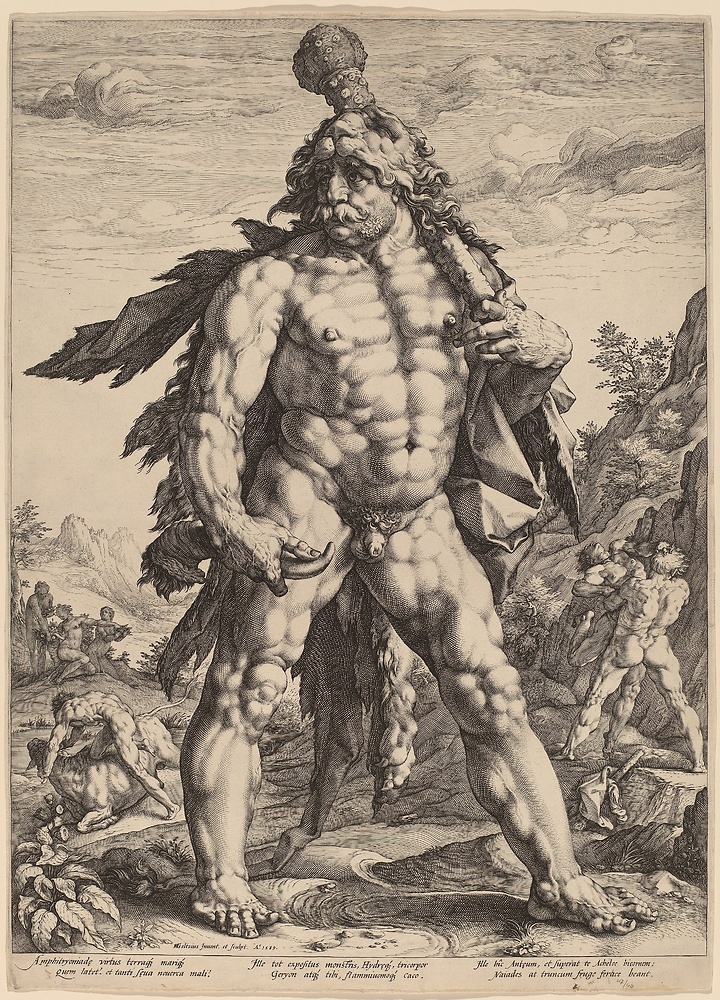
Heracles
by
Hendrick Goltzius
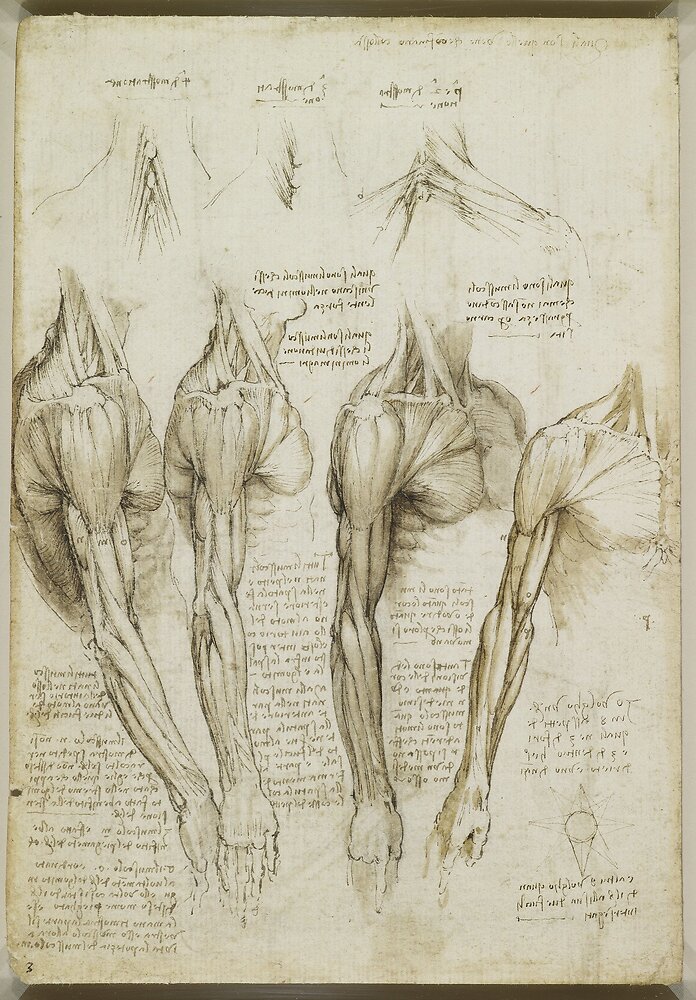
Superficial anatomy of the arm; mostly side/front view
by
Leonardo da Vinci
Semantical layer
The semantical layer is about the quality of the message being expressed, or the interpretation potential of the work, and how this manifests at the superficial layer. The composition article develops this interleaving.
Example: The following uses two major symbols uniquely identifying Heracles:
- the lion skin;
- the club.
Both recalling the story of the Nemean lion
The figure is resting: its center of gravity should be between the figure and the club. The heavy musculature, æsthetically simplified, clearly evoques strength; the minute genitalia, perhaps contrary to modern perception, flatters the hero’s self-control & lack of animality:
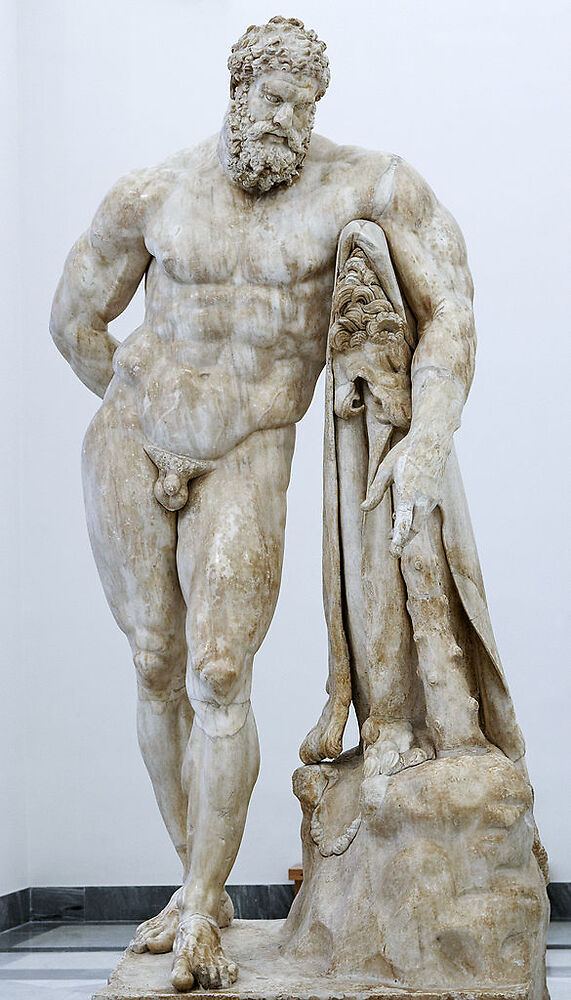
Farnese Hercules, marble by Glycon, likely after a model from Lysippos
by
Marie-Lan Nguyen
Presentational layer
The presentation layer wraps how the piece is presented, like where, when and how is it exposed, what kind of frame is being used or how is it introduced to the viewer. A good suit can change a man, the same goes for a painting.
While at a different layer, the same principles of composition interleaving the two previous layers apply there too.
Example: Despite the first image’s quality, the contrast in size, the relative positioning of the statue/visitor, their postures, the strong highlights on the statue, all emphasize the relative greatness of the ancient hero compared to mere mortals. On the second, Goltzius tried in his time to obtain a similar result, within the artwork.
Farnese Hercules, by Glycon, likely after a model from Lysippos
by
Daniel Ventura
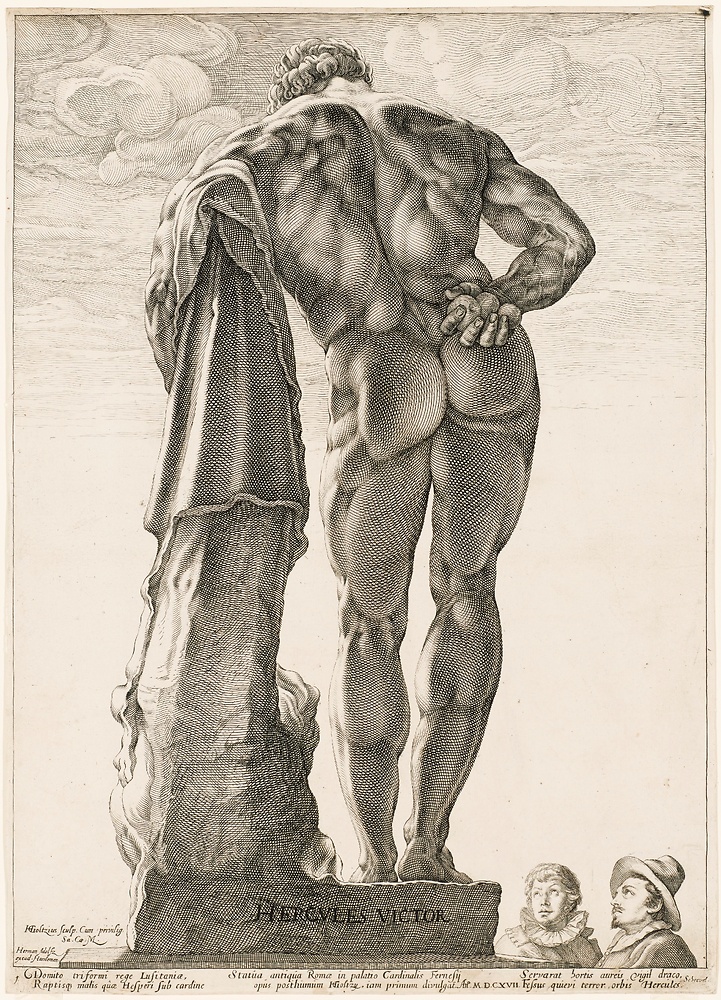
Engraving of the Farnese Hercules by Glycon, likely after a model from Lysippos
by
Hendrick Goltzius
Financial layer
I go a bit further on this layer in this article; perhaps the main takeaways would be the following pricing criteria:
- artist’s notoriety and skillset;
- skillset and artwork’s scarcity;
- artwork’s subject;
- material qualities (durability, scarcity, etc.).
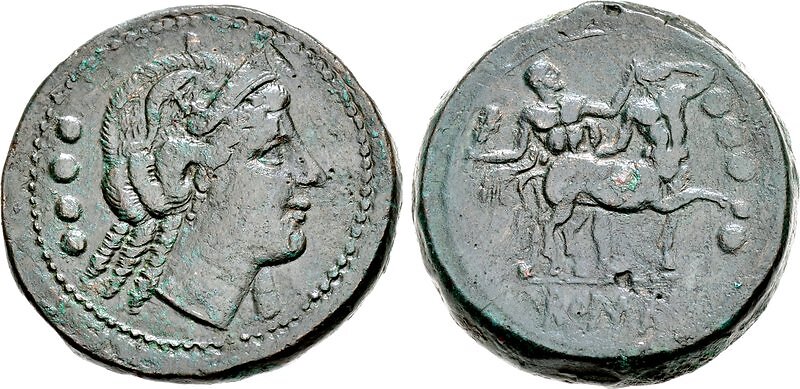
Triens representing Juno on one side, and Heracles with a centaur (Nessus?) on the other side
by
CNG
Comments
By email, at mathieu.bivert chez: